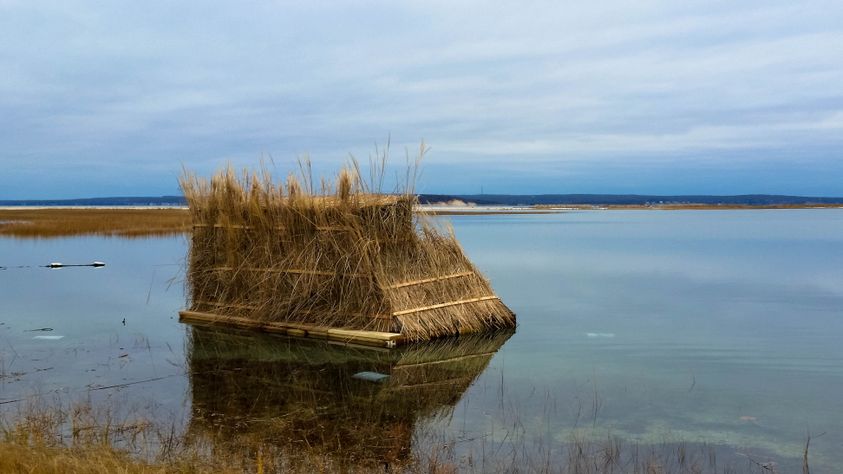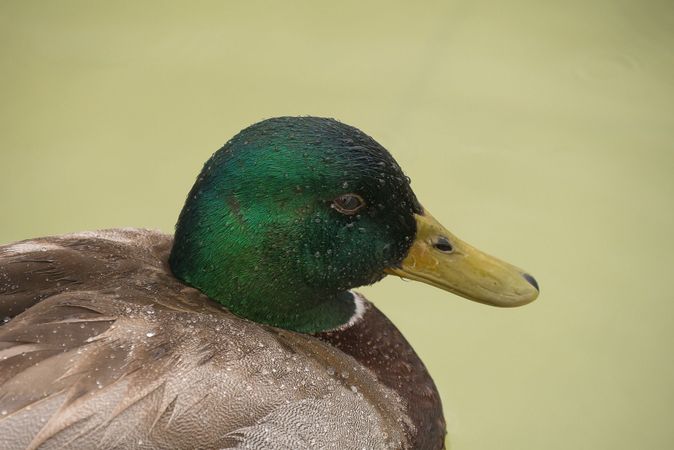For years I hunted the cypress swamps and flooded hardwoods of our property like my father had before me: donning waders and parkas and leaning against a tree to erase my silhouette. We killed plenty of ducks that way. However, as the years wore on, standing waist-deep in swamp water while the temperature hovered below freezing was getting tougher than it once was.
The decision to build a duck blind came after one of those frigid hunts in late January a few years back. Cold, wet from a leaky boot, hungry and tired, I told myself I’d had it with the ducks as I hobbled to dry land. Nothing a warm house and steaming coffee couldn’t cure. After I came to my senses, my friends and I drew up the plans that would eventually become the blind we still hunt today.
While our plywood box isn’t fancy, it sure beats spending half the day shivering. Now, instead of sitting in the cold, a portable heater keeps me toasty while I lounge on a cushioned bench. I’ll often indulge in some bacon and eggs made on a Coleman stove, accompanied by fresh coffee, of course. When the mallards are down in droves, our duck hole becomes my home away from home.
As the weather warms and water levels start to fall, it’s time to construct a blind of your own. With the help of a few handy friends, the project shouldn’t take you longer than a weekend. Then, come duck season, you’ll be hard pressed to leave the timber.
Pick a Prime Location
No matter what type of terrain you hunt, locate food like duck potato, widgeon grass or acorns. Ample feed will attract waterfowl throughout winter. Easy access to cover and wetlands, as well as low hunting pressure will ensure they hang around.
Look for food sources before choosng a hunting location. An ample supply of food, such as acorns in timber, will attract and hold ducks throughout winter.
Think about the prevailing wind and the sun’s position when deciding where you’ll build and keep them both at your back. Waterfowl will almost always land into the wind and you certainly don’t want to a glare to impede shooting accuracy. Also, light shining into your blind will scare away every bird within gun range.
If your honey hole has held ducks before, it likely will next year. However, if you’ve seen less bird activity, don’t shy away from venturing to another location. Often, habitat will fluctuate and ducks will always go where the easiest access to food and cover are.
Consider the vegetation surrounding your presumptive location. While in the spring and summer a blind may be hidden well, you could be exposed when the leaves die off. Too much cover nearby can impede your view. Ensure you’ve got a clear line of sight to the water and sky.
Materials and Design
Your hunting party will dictate the size of the blind. Six feet wide and 16 feet long will house four people comfortably with room to spare for one or two more. Get creative. Design your project as big or small as you like. In any case, remember to use pressure-treated plywood and lumber, even on the interior, which should stave off rot for many years.
When you build a duck blind, ensure all of the lumber is pressure treated, which is coated with chemicals to prevent the wood from rotting.
Typically, using four 4x4-inch posts braced with 2x8 cross beams is a solid foundation. Keep the blind elevated so when the water rises in winter you won’t get swamped. Secure the foundation posts in the ground and, if the area is devoid of water, set the them in concrete for added stability. Frame using 2x4s surrounded by half-inch plywood walls, floor and roof. Adding dividers spaced across it, running from the roof to the front wall, will increase structural integrity and provide a space to attach vegetation when brushing. Leaving a crack in the floor will allow water to drain. Cover the interior and exterior with olive drab or brown spray paint.
The back wall should be higher than the front, providing enough headroom to sit without ducking. Slope the roof downward from front to back. Extend it over three-quarters of the blind, stopping two feet shy of the front wall, which should be shorter than the back to provide plenty of shooting room. Use the same plywood from the walls for a hinged door located in the rear. In addition to stairs for you, if you’ve got a retriever, consider constructing a smaller ramp on the side with a separate platform.
Concealment
Ideally, you’ve got plenty of cover you can construct your blind around, such as willow trees or clusters of cattails. That will help the set up blend into the environment and make brushing it easier, as you’ll simply need to collect green vegetation to fill in the gaps. Attach woven metal wire covering the exterior to secure saplings and blades of grass with twist ties. Wait a week before the opener to cut any green vegetation to keep it fresh as long as possible. Also, covering the outside with olive drab or brown netting helps to further break it up.
Abundant vegetation near your blind will help to break up its boxy appearance, making it look more natural.
If the blind stands alone with little surrounding cover, brushing effectively is paramount. To further break up the boxy appearance, drive posts into the ground near the blind and attach small oak or willow trees to them. Dot them at varying heights and spaces, thus mimicking a thicket and giving your project a natural look.
Final Touches
I’ve seen blinds with televisions, kitchens, boat slips and fancy furnishings. The only thing missing was a bedroom. That way you’d never have to go home. For most people, cushioned seats and room for a heater will suffice. Shelves lining the front wall are handy to hold extra boxes of shells, as well as a cup of coffee. Don’t forget a place to stash your shotguns where they’re safely out of the way when not being used, but readily available. Adding traction tape in strips to the floor can prevent any slips.
The best part about the project is the fulfilment you’ll get after the first hunt in your new blind. For me, each opening day, each year, yields the same result. All of the hard work I put building and maintaining my home away from home over the years is manifested when that first group of ducks come barreling through the timber. For so many reasons, I can’t help but smile.







